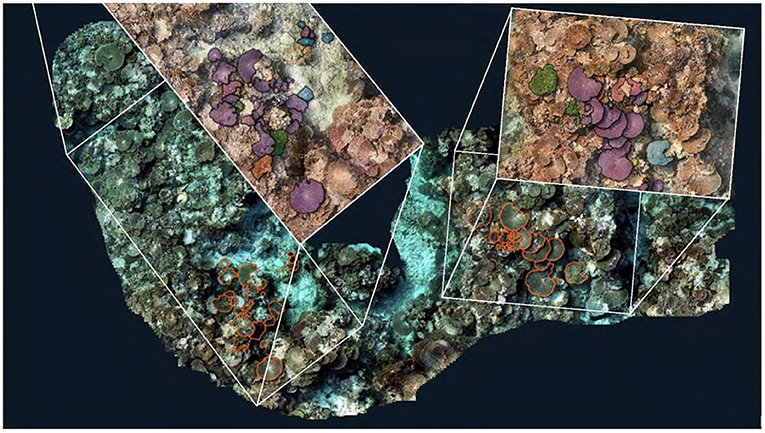Editorial: Advances in 3D Habitat Mapping of Marine Ecosystem Ecology and Conservation
Renata Ferrari, Javier X. Leon, Andrew J. Davies, John H. R. Burns, Stuart A. Sandin, Will F. Figueira and Manuel Gonzalez-Rivero
Abstract
Advances in 3D technology have enabled low-cost and accurate measurements of habitat structure and organism size in both terrestrial and marine environments. However, there is still a need for guidance on how to apply novel 3D technologies for marine ecology and conservation. Multiple teams from around the world are leading the application of 3D photogrammetry in marine ecosystems. The widespread adoption of 3D methodologies produces a growing need for agreed standards to assess the quality of 3D data (e.g., error metrics). Similarly, standardized techniques where possible, will ensure collaboration and compatibility of 3D data across space and time.
This Research Topic is a first step toward the standardization of methods and communication of the state of the field to the wider audience in marine science and conservation using or considering the use of 3D technologies. The Topic provides relevant information that: (1) defines standard methods for the application of 3D technologies to marine ecosystem ecology and conservation, (2) advances fundamental marine ecological and conservation knowledge relevant to the habitat structure of marine ecosystems; and (3) highlights knowledge gaps and directions to move toward a high-resolution 3D map of the world’s oceans.
The Research Topic focuses on the use of high-resolution 3D reconstructions of underwater ecosystems. It includes 13 articles, of which six are original research articles, one is a perspective, and six are methodological advances. Most of the original research articles also included a methodological validation or comparison. The geographic scope of this Research Topic ranges from the Caribbean to Greenland to the Pacific Islands and Australasia. Nine articles were conducted in coral reefs, three in temperate rocky reefs, and one on a deep-sea cliff, which highlights the versatility of 3D technologies. The diverse group of articles explored the relationship between habitat features, benthic and fish abundance, health, diversity, the potential of reef scape genomics, and the effectiveness of marine protection. A range of equipment from action cameras and DSLRs, to machine vision cameras, underwater robots, and echo-sounders were used to generate 3D reconstructions, emphasizing how a broad range of 3D technologies can benefit a wide variety of end users and applications. Similarly, the breath of the research published in this Research Topic captured 3D reconstructions of sub-millimeter resolutions, as well as 3D maps across large spatial extents.
Request PDF
| To request a PDF copy of this paper, please enter your email address below: Your email address is not stored, it is only used to send an email with an attached PDF to you. |
Full Citation
Ferrari R, Leon JX, Davies AJ, Burns JHR, Sandin SA, Figueira WF, Gonzalez-Rivero M (2022) Editorial: Advances in 3D Habitat Mapping of Marine Ecosystem Ecology and Conservation. Front Mar Sci 8
Manuscript DOI
https://www.frontiersin.org/articles/10.3389/fmars.2021.827430/full

